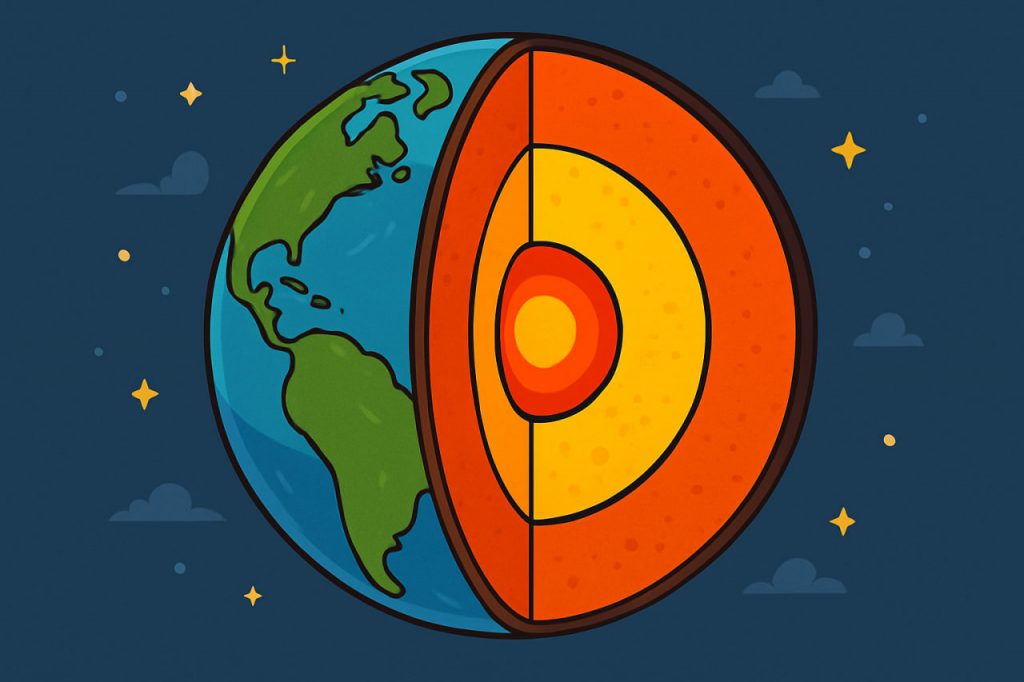The mantle is a massive layer of rock located between the Earth’s crust and core. It makes up about 84% of the Earth’s total volume and plays a key role in the planet’s geological activity. This region extends from roughly 35 kilometers below the surface (under continents) or 7–10 kilometers (under oceans) to a depth of around 2,900 kilometers.
1. Structure of the Mantle
Scientists divide the mantle into two main sections:
- Upper mantle: Includes the rigid lithosphere and the more ductile asthenosphere, which allows tectonic plates to move.
- Lower mantle: Denser and hotter, extending down to the outer core.
The mantle is not molten rock everywhere—it is mostly solid but behaves plastically over long periods, enabling slow, convective movement.
2. Composition of the Mantle
The mantle is primarily composed of silicate minerals rich in magnesium and iron. Common minerals include olivine, pyroxenes, and garnet. At greater depths, extreme pressure changes the structure of these minerals into high-pressure forms.
3. Mantle Convection and Plate Tectonics
Heat from the Earth’s core drives mantle convection, where hot material rises and cooler material sinks. This movement powers plate tectonics, which shapes continents, forms mountains, and causes earthquakes and volcanic eruptions.
4. Studying the Mantle
Scientists cannot drill deep enough to directly sample the mantle. Instead, they study it through:
- Seismic waves generated by earthquakes.
- Volcanic rocks brought to the surface from mantle depths.
- Laboratory experiments simulating high pressure and temperature conditions.
5. Importance of the Mantle
Without the mantle’s convective activity, the Earth’s surface would be geologically stagnant. The mantle recycles crustal material, regulates volcanic gas emissions, and maintains the magnetic field indirectly through core interactions.
Glossary
- Lithosphere: The rigid outer layer of the Earth, including the crust and uppermost mantle.
- Asthenosphere: A semi-fluid layer of the upper mantle that allows tectonic plates to move.
- Mantle convection: The slow movement of mantle material caused by heat transfer from the core.


